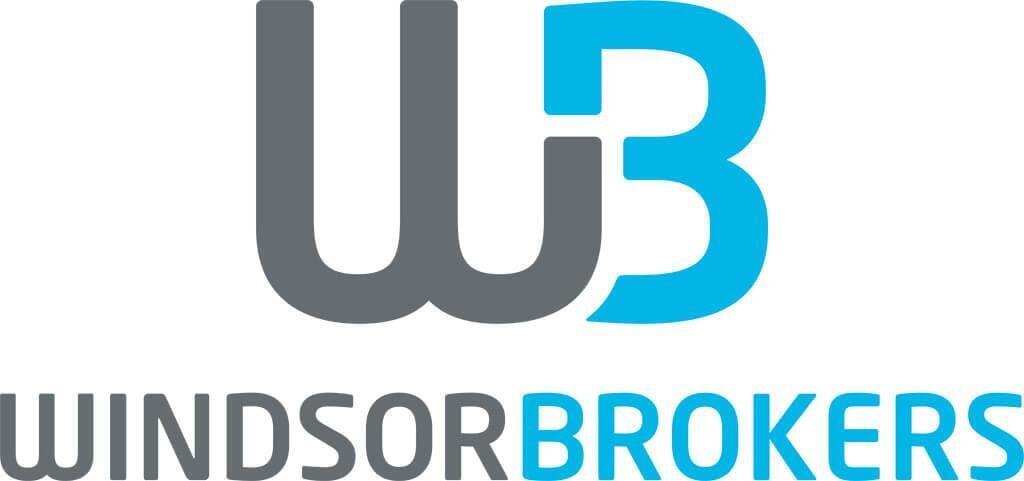
This can include avoiding investments in companies with products that they do not support and directing funds to those they do. The P/S ratio is figured by dividing the current stock price by the 12-month sales per share. The current stock price can be found by plugging the stock symbol into any major finance website. The sales per share metric is calculated by dividing a company’s 12-month sales by the number of outstanding shares.
Certain types of firms, such as home builders, car makers, and steel mills, have unique traits. These firms tend to see sharp drops in profit during times of decline. When the latter happens, you may be enticed by what appear to be quickly growing earnings, low P/E ratios, and, in some cases, large payouts. It was a way for people to look at the price as it relates to the profits.

Overbought is a term used when a security is believed to be trading at a level above its intrinsic or fair value. Overbought generally describes recent or short-term movement in the price of the security, and reflects an expectation that the market will correct the price in the near future. This belief is often the result of technical analysis of the security’s price history, but fundamentals may also be employed. Fortunately, there are some simple ratios and signals that can be helpful in determining whether a stock is cheap or expensive.
S&P 500
It is calculated by dividing a stock’s price by its trailing 12 month earnings per share. If a stock is trading for $5 and its earnings in the past year were $1, its P/E ratio would be 5. In stock market jargon, the stock would be said to be trading at five times earnings. The price-to-earnings (P/E) ratio is one of the most widely used ratios in investment analysis. It compares a company’s stock price to its earnings per share and is a way for investors to know how much they’re getting in earnings power relative to the price they’re paying for the stock.
Is Palantir Stock an Undervalued Gem? – The Motley Fool
Is Palantir Stock an Undervalued Gem?.
Posted: Sun, 03 Sep 2023 10:56:00 GMT [source]
Investors and analysts consider stocks which have a P/E ratio of 50 or above to be an overvalued share, especially in comparison to a stock which has a ratio at par with or below 10. A company that has a low P/E ratio may actually be undervalued, or there may be a very good reason for its low valuation. For example, it could be in financial trouble or have legal or labor problems. There are many reasons why a stock’s P/E is low and only one of them is that its actually undervalued.
Advantages of overvalued stock
SmartAsset Advisors, LLC (“SmartAsset”), a wholly owned subsidiary of Financial Insight Technology, is registered with the U.S. SmartAsset does not review the ongoing performance of any RIA/IAR, participate in the management of any user’s account by an RIA/IAR or provide advice regarding specific investments. But when you follow it as part of a well-run portfolio of quality, blue-chip stocks, you can get some good results. It also can force you to behave in a routine way, making regular buys into the market whether it’s up or down. To track and check a dividend yield over time, first map out the dividend yields over several points in time.
- Pay particular attention to sales made by the CEO, CFO or founder of the company.
- It’s often a mistake to part with a stock just because it might have gotten a bit pricey from time to time.
- But safest does not equal most profitable – bond yields are generally low.
- To be conservative, let’s assume it increases to 5.25% (which is above the upper band of the normalized average over the past 150 years).
- If the average interest rate the US government pays on its borrowings (also referred to as the treasury yield) is higher than the earnings yield, some traders believe that the stock market is overvalued.
- However, you should note that this data is based on educated estimates and calculations from industry analysts.
Not buying a stock that is overvalued is not the same as holding on to a stock that has gotten ahead of itself in the short term. There are plenty of reasons you might not sell a stock that is overvalued. Many of these involve trade-off choices about opportunity cost and tax rules. Both the price/earnings-to-growth (PEG) and dividend-adjusted PEG ratios can be useful when you’re trying to decide the true value of a stock. Here’s a breakdown of what analysts mean when they say a stock is overvalued—and how you, as an investor, can use that information to your advantage.
Are stocks overvalued?
Although you’ve just witnessed a ton of complex-sounding financial terms, the Buffet indicator is actually rather simple. To get what we need, we simply take the value of the U.S. securities market and divide it by annualized GDP, then multiply by 100 in order to get a percentage. You might think that a disparity in real, intrinsic value and stock price might seem like a bad thing—but you’d be very, very wrong. Personal Finance & Money Stack Exchange is a question and answer site for people who want to be financially literate. Each week, Zack’s e-newsletter will address topics such as retirement, savings, loans, mortgages, tax and investment strategies, and more.
These will give you a feel for the way the firm works, before you dig deeper into the numbers. Get stock recommendations, portfolio guidance, and more from The Motley Fool’s premium services. Four figures can produce some great returns if invested in the right places. Sherwin-Williams (SHW -0.55%) is a paint and coatings brand popular among consumers and professionals alike. Its strong brand and large network of retail stores give it a big advantage over competitors, and it flourished during the DIY boom in 2020.
What does overvalued stock mean?
This won’t come as a surprise to anyone – just as they affect the rest of the economy, interest rates also have a huge effect on whether or not the stock market, as a whole, is overvalued. The Shiller Cape (a.k.a Shiller PE) ratio is a valuation measure pioneered by Yale University professor Robert Shiller, which is used to determine if the market as a whole is overvalued or undervalued. In the past few decades, it has proved to be one of the most reliable methods of answering that question. When it comes to ratios and metrics, the best way to use them is comparatively – when you’re narrowing down your search of what to invest in, compare companies through the lens of these factors. In short – if a stock is overvalued, you’re going to be overpaying if you decide to buy it – and that’s something you always want to avoid.

These factors, when combined, lead to a simple conclusion – bonds aren’t as attractive any more. The price/earnings-to-growth or PEG ratio is a slightly more advanced formula – it depends in large part on the P/E ratio. To get this ratio, we take a stock’s P/E ratio and divide it by the growth rate in a specific period of time. With the PEG ratio, a rule of thumb is in place – the lower, the better. Anything less than 1 is great, and everything near or above 2 is likely overvalued.
It was also a way to strip away the complex data that can arise when dealing with Generally Accepted Accounting Principles (GAAP) standards. If you’re trading US stocks in the Middle East, for example, you’ll want to consider the US economic cycle. https://investmentsanalysis.info/ If the economy is in a growth cycle, the stock may not be overvalued, just responding to the greater economic landscape. This value is usually a little different from its market value, or what its shares are currently worth in the market.
A lower ratio may indicate that the majority of a company’s funding comes from its shareholders, but this does not necessarily imply that the stock is overvalued. A company’s D/E ratio should always be compared to the average of its competitors to determine if there’s an overvaluation of stock. The price-to-earnings ratio (P/E) is one metric used to determine a company’s stock value. In essence, it describes how much money you’d need to spend in order to make £1 in profit.
Remember that there is no magic formula when it comes to investing and you shouldn’t ever rely on just one or two metrics to make a decision. Work to understand a company’s future outlook Ether trader and if you can’t reach a conclusion, you’re better off not owning the stock at all. PEGs under 1.0 are thus considered to be potentially undervalued and above 1.0 potentially overvalued.
But the market may have gotten ahead of itself by piling onto the popular name in the industry.
Is It Time To Consider Buying AmRest Holdings SE (WSE:EAT)? – Simply Wall St
Is It Time To Consider Buying AmRest Holdings SE (WSE:EAT)?.
Posted: Tue, 05 Sep 2023 07:44:28 GMT [source]
These comprise balance sheets, income statements, cash flow statements, debt-to-equity ratios, and other quantitative and qualitative elements that assess the general health of a stock. In understanding the concept and meaning of overvalued stock, one has to look at the claim made by a few selected market theorists that claim that the market is inherently flawlessly efficient by nature. They argue that because the stock market is all-knowing, fundamental analysis of a stock is useless. The instances stocks are said to be overvalued are when investor confidence soars, causing a surge in demand, or when a company’s fundamentals rapidly deteriorate while the market price remains stable. When stock analysts talk about a stock being either undervalued or overvalued, they’re most likely using any one of many valuation models that attempt to predict a stock’s direction. Undervalued stocks are expected to go higher; overvalued stocks are expected to go lower, so these models analyze many variables attempting to get that prediction right.
How to Determine Whether a Stock is Overvalued?
It’s worth noting that no single metric is perfect and any use of these ratios or signs to determine business value should be considered along with a complete analysis of the company’s business and industry. Given a company’s historical earnings per share results, it could be easy for an investor to find an estimated price per share of a stock using the average of P/Es from some comparable companies. Moreover, viewing an actual P/E of a company can also provide insight into the reasonability of the stock when compared to its peers. By definition, it is the price a company’s shares trade at divided by its earnings per share (EPS) for the past twelve months. The trailing P/E is based on historical results, while forward P/E is based on forecasted estimates. Going back to a company’s fundamentals can give you insight into what’s driving value and whether the stock is priced fairly in relation to earnings and demand.